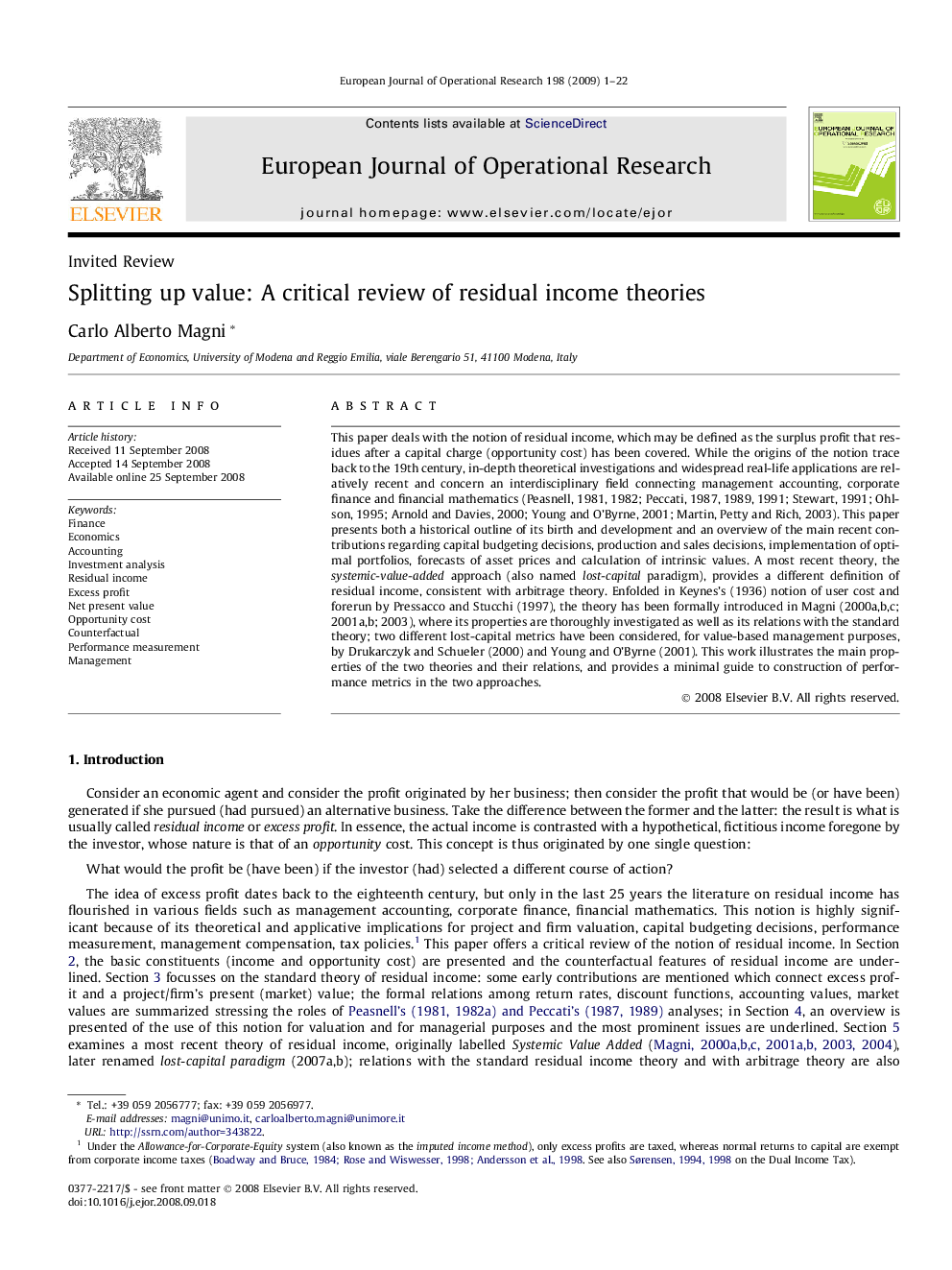| Article ID | Journal | Published Year | Pages | File Type |
|---|---|---|---|---|
| 482499 | European Journal of Operational Research | 2009 | 22 Pages |
This paper deals with the notion of residual income, which may be defined as the surplus profit that residues after a capital charge (opportunity cost) has been covered. While the origins of the notion trace back to the 19th century, in-depth theoretical investigations and widespread real-life applications are relatively recent and concern an interdisciplinary field connecting management accounting, corporate finance and financial mathematics (Peasnell, 1981, 1982; Peccati, 1987, 1989, 1991; Stewart, 1991; Ohlson, 1995; Arnold and Davies, 2000; Young and O’Byrne, 2001; Martin, Petty and Rich, 2003). This paper presents both a historical outline of its birth and development and an overview of the main recent contributions regarding capital budgeting decisions, production and sales decisions, implementation of optimal portfolios, forecasts of asset prices and calculation of intrinsic values. A most recent theory, the systemic-value-added approach (also named lost-capital paradigm), provides a different definition of residual income, consistent with arbitrage theory. Enfolded in Keynes’s (1936) notion of user cost and forerun by Pressacco and Stucchi (1997), the theory has been formally introduced in Magni (2000a,b,c; 2001a,b; 2003), where its properties are thoroughly investigated as well as its relations with the standard theory; two different lost-capital metrics have been considered, for value-based management purposes, by Drukarczyk and Schueler (2000) and Young and O’Byrne (2001). This work illustrates the main properties of the two theories and their relations, and provides a minimal guide to construction of performance metrics in the two approaches.
